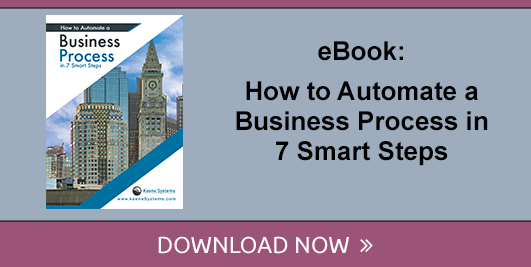Off-the-Shelf Software is Limiting Your Company’s Productivity
2 min read

Whenever company leaders look for new opportunities to increase employee productivity, they typically turn to software as a way to accomplish precisely that. "Our old systems aren't keeping up with our modern day demands," they tell themselves. "Obviously, a new piece of technology is the silver bullet we've been looking for.
Sadly, this isn't necessarily the case.
In certain situations, software can inject a significant boost of productivity into a business - both at the larger, organizational level and on an employee by employee basis. But what a lot of people fail to realize is it isn't ANY software that will get the job done. Only the right software can positively impact productivity in the way that you need. The wrong software, on the other hand, tends to have the exact opposite effect at the worst possible moment.
The Consequences of Getting it Wrong
The vast majority of the time, the "wrong" software takes the form of a piece of off-the-shelf technology - something that was not designed for your company and was instead designed to appeal to as many companies as possible. You can't fault software developers for this - they too are running a business. But the fact of the matter is that existing software can't support your workforce, your processes or your culture. It's not that it is inherently bad at these things - it's that it was never intended to accomplish them in the first place.
Likewise, legacy software that has become outdated could also be having the same effect. Think about how much your company has changed in even the last five years. Why would you assume a piece of software you purchased off-the-shelf five years ago will support your infrastructure as it exists today?
Equally pressing is the fact that a lot of people have a misconception about why they're dealing with low productivity in the first place. In the social media age, oftentimes leaders will assume that lost productivity usually equals employees who are spending too much time every day on Facebook and Twitter. In reality, their losses stem from a problem they seem unwilling to address - the fact that outdated systems are making the jobs of their employees harder, not easier.
For the sake of example, consider an old piece of software that doesn't properly integrate with the five other pieces of tech that your average employee needs to use to do their job every day. One study revealed that workers can lose up to 40% of their time - or about 16 hours per week - in productivity because they're spending so much effort switching between multiple software applications to accomplish what should be a simple task. This results in a cumulative corporate loss of about $450 billion per year, every year.
Another study conducted by Hubspot revealed that 82% of employees lose up to an hour a day managing various tools that were never designed to work together, for a total of about five hours per week in lost productivity. An IDC research study even found that people spend about 30% of their day, or roughly two and a half hours, searching through apps and tools to find the data they need to even perform their job responsibilities in the first place.
Why, exactly, is this okay?
Custom Software is the "Solution" You Need to a Modern Day Problem
In stark contrast to off-the-shelf software, custom software almost always leads to productivity increases because it's designed specifically for your company. It's an asset designed to support your people and your processes - to empower them. It's also a resource that absolutely nobody else can use because it's so specific, which means that it's also the perfect change to carve out a genuine competitive advantage for yourself in the marketplace.
In the end, never forget that your business systems and processes should maximize employee efficiency and profitability, not minimize them. Off-the-shelf software is limiting your company's productivity, plain and simple. But thankfully, the answer is a clear one: custom software can and will generate the results you need at this most crucial of moments on your corporate journey.
To learn more about the importance of eliminating human error in your operations, please download the eBook titled "How to Automate Business Process in 7 Smart Steps."

